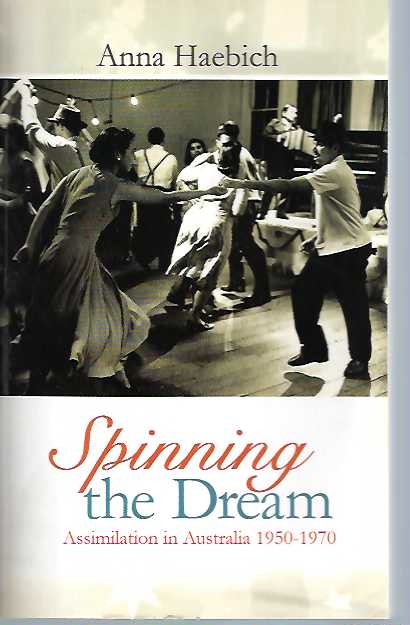“A history of the policy of Assimilation in Australia as applied to Aboriginal people and non-English speaking immigrants from the 1950s to the 1970s”
In the 1950s and 1960s, Australians were challenged by new visions of their nation. Assimilation was heralded as the mechanism to sweep away divisions and exclusions of the past and absorb Aboriginal and new Australians into a common shared way of life. The rhetoric and reality of assimilation was to have a profound and lasting effect on several generations of Australians before it was abandoned in the 70s for multiculturalism. With Spinning the Dream, multi-award-winning historian Anna Haebich re-evaluates the experience of assimilation in Australia, providing a meticulously researched and masterfully written assessment of its implications for Australia’s Indigenous and ethnic minorities, and for immigration and refugee policy.
460 p. : ill. ; 21 cm. #100122 (“Review Copy” stamp.)
Assimilation (Sociology) — Australia. | Minorities — Government policy — Australia. | Aboriginal Australians — Government policy — Australia. | Immigrants — Government policy — Australia. | Noongar / Nyungar / Nyungah people (W41) (WA SI50) | Politics and Government – Civil rights and citizenship. | Race relations – Representation – Media. | Settlement and contacts – Ethnic groups, immigration and multiculturalism. | Government policy – Assimilation. | Australia — Cultural policy. | Australia — Social conditions — 1945- | Australia. | Western Australia (WA)
